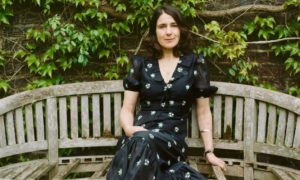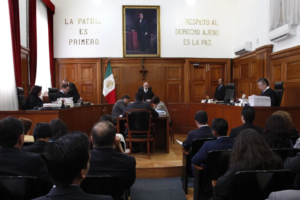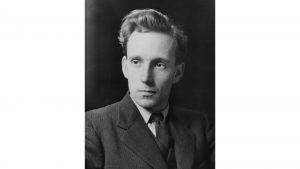For Palestinians living in occupied territories, turmoil and heartbreak have haunted generations.
EAST JERUSALEM—At the Sharabati family home in the Old City of Jerusalem, small pieces from the crumbling wall in the kitchen often fall into soup prepared for lunch or dinner. Renovations to their property—on territory the international community has labeled illegally occupied by Israel—are forbidden by Israeli authorities while a bureaucratic legal process tied to lawsuits and eviction notices has now stretched beyond three decades.
“Growing up in the Old City was hard,” says Omar Sharabati, 25, who was born and raised in this home. He says his family lives under constant fear of eviction. Israeli settlers took over the apartment of the neighbor below, and they have to use the stairwell of the settler home to enter their own.
“They [the state] took the balcony four years ago; we were forced to demolish it,” Sharabati says. “The bathroom cost $20,000. The Israeli authorities fined us over a lot of things, like the air conditioning; we did not know it wasn’t allowed. Everything is illegal.
“If someone comes to see the kitchen like this, they will force us to close the kitchen and not use it anymore,” he says. “That’s why we cover it all when they come to check. Though we cannot renovate, we paste it with cement.”
Members of the Sharabti family are among some 970 Palestinians deemed to be at risk of evictions as a result of court action presented by Israeli settler organizations such as Elad through the Israeli legal system, the United Nations has reported. Court rulings have enabled Elad to seize several properties in the predominantly Palestinian neighborhood of Silwan and establish compounds there. The majority of cases have been challenged unsuccessfully in Israeli courts. Silwan has been the hotbed of settlement activity because of its location and assertions of ties to King David who, according to the Hebrew scriptures, ascended to the throne during ancient times.
These developments are part of wider settlement expansions within Palestinian residential areas located in a region labeled by Israel as the “Holy Basin” of East Jerusalem. Jerusalem is divided—while Israel considers it the capital, half of the city is considered illegally occupied under international law.
Some settlements are home to religious Zionists who claim a biblical birthright to the land. Others were established for alleged security or ideological reasons without formal but tacit support from the Israeli government.
In addition to Silwan, the settlement areas also include the Muslim and Christian quarters of the Old City—Sheikh Jarrah, At-Tur (Mount of Olives), Wadi Joz, and Ras al-Amud. Jewish settlers reside in houses that have been expropriated by means of the Absentee Property Law and claims of former Jewish ownership. They also have built compounds financed by settler organizations. All this has led to imposed restrictions on gatherings in public spaces, limited residential growth, and increased friction and violence.
“The establishment of many of these settlement compounds has involved the forcible eviction and displacement of Palestinian residents, with negative humanitarian impact,” says a UN report. “It has also generated a coercive environment on the daily lives of Palestinians residing in the vicinity of these compounds by creating pressure on them to leave. The main elements of this environment include increased tension, violence and arrests; restrictions on movement and access, particularly during Jewish holidays; and a reduction on privacy due to the presence of private security guards and surveillance cameras.”
PALESTINIAN IDENTITY
As a Jordanian-American and a journalist, the Palestinian story is never far from my doorstep. I can be, depending on the situation, Tanya from Texas, Jordanian wife to a Palestinian citizen of Israel, or mother of two Palestinian children. These varying identities give me access to almost every working scenario imaginable here—but documenting the most recent protests revealed a bonding thread.
For Palestinians, required identification cards depend on where you live. There are Gaza ID holders, West Bank ID holders, East Jerusalem ID holders, and Palestinian citizens of Israel. Although the colors of the documents may be different, they share a common reality: a narrative of dispossession, damage to homes and business, the loss of family members and friends.
At a protest in Shufa Amer—a small city on the outskirts of Haifa populated by Muslims, Christians, and Druze—15-year-old Basil Abu el-U’la, a Palestinian citizen of Israel, was standing idle while attending a protest when he was shot in the back with a rubber-coated steel bullet while talking on his phone. He turned around to see the source of the pain and was met with another round straight into his left eye. His identification as a citizen of Israel did not help him.
The 1.8 million Palestinian citizens of Israel, who make up about 20 percent of the population inside Israel proper, are the descendants of those left on their land after the creation of the Jewish state in 1948.
“Israeli authorities want to scare young people who have never demonstrated before, people they can threaten because they still have the future ahead of them,” says human rights activist Najwan Berekdar.
Tamer Nafer, a popular rapper and activist from DAM, the first Palestinian hip hop group, says younger Palestinians are inspired by the Black Lives Matter movement in the United States and its use of social media to garner support. During the most recent turmoil, Palestinian activists such as Muna and Muhammad al-Kurd from the Sheikh Jarrah neighborhood flooded social media with posts of what was happening on the streets.
“There are new strategies of the youth. I think it’s part of the Black Lives Matter effect,” says Nafer, 43. “Watching this movement got me to question how come the world does not see us like that, and how their use of social media platforms is handling the revolution in a beautiful way.
“It’s a cool generation because they have direct access to the people without the interference of the ‘suits’,” Nafer says, referring to media in general.
LIFE IN EAST JERUSALEM
In Silwan, Qutaibah Odeh, a 27-year-old social worker, credited the large street protests for obtaining international attention.
“I am from the generation of the street before the generation of social media. Before we used technology—we were in the streets,” he says. “It’s our demonstrations in the streets that brought the stories we see on social media upon us.”
In his al-Bustan neighborhood of Silwan, another legal battle is underway following a 2004 order by Israeli authorities for demolitions to make way for what some critics have termed a “biblical theme park.”
“Because they say their king (and our prophet) David walked here 4,000 years ago,” says Odeh, “for this reason they think its ok to demolish our homes, kicking out more than 1,500 residents who have all their stories and memories in these homes, where their grandparents and great grandparents lived….so they can have a biblical park.
“We are teaching the newer generation to hold the torch of liberation after us. We believe what the Palestinian poet Mahmoud Darwish once said, ‘one day, we’ll be what we want to be.’” Odeh says. “We are proving that Palestinians are creative, unorthodox, and we create liberation from nothing.”
East of al-Bustan, in the Batan Hawa neighborhood, the sounds of excited children and splashes of water emanated from the rooftop of a modest apartment building where an inflatable pool was set up.
“The children were disappointed not to visit the sea for their Eid vacation after Ramadan—there was too much fear for us to leave our house. So I brought them this pool,” explained Kayed al Rajabi, 34-year-old father of six sons and two daughters, whose family also is facing possible eviction.
“I just wish we did not have to live with such worry… if my children will be safe when they go to school, or that if I leave my house, settlers will break in and take it,” he says. “We do not sleep at night; we are constantly worried and scared.”
PROTESTS IN SHEIKH JARRAH
At an afternoon gathering in Sheikh Jarrah—in the midst of last month’s ceasefire agreement between Israel and Hamas in Gaza—a small crowd of protestors, including some Israelis, carried posters reading “Save Sheikh Jarrah.” Demonstrators demanded a halt to the displacement of Palestinian families, discrimination and violence triggered by settlement expansions. Newly installed checkpoints in the last few weeks have made it difficult for even children to visit relatives who live within the neighborhood—even as Orthodox Jews visiting a nearby burial site for a historic rabbi and settlers freely walk in and out of the neighborhood
“Freedom, freedom, we want to live in freedom,” protestors chanted. “Freedom for Sheikh Jarrah, freedom.” When the chants grew louder, armed Israeli forces rushed forward, throwing sound grenades and using force to disperse the small gathering.
Perhaps the longest and most turbulent history in the ongoing conflict with Israel is in the West Bank. Lost eyes, limbs, and lives are not uncommon during protests. Within the three hours on assignment here, these are among the images I captured: a child playing in a newly installed security/observation concrete post located at the entrance of the village; a council member who shared a horrific story about a 15-year-old who had been shot in the cheek by a settler earlier in the week; and friends and family members of another 15-year-old teen, Islam Wael Burnat, who was fatally shot in the head during a recent protest.
Islam’s best friend, Ibrahim Khatib, held him in his arms as he died. When I shared my condolences, Ibrahim’s face dropped, and he uttered a common sardonic refrain: “It’s ok. We are Palestinians.”
That evening, back in the city of Ramallah, I walked into a bar. There is always this nagging feeling that the Palestine story should not solely focus on the dead and misery. The bar was filled with young people, including Faiza Afifi, a graphic design student at Birzeit University who fled from Gaza at the age of 14 during an Israeli military offensive in 2014. She says she lives with constant guilt, her gnawed nails serving as testament. Everyone drank, and the political chatter mixed with humor and a sense of being in the moment. It is a cycle all too familiar here.




